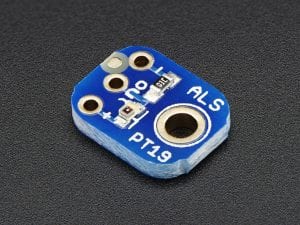
Luminosity Sensor from Adafruit
An advanced digital light sensor, ideal for use in a wide range of light situations.
Technical Description
Compared to low cost CdS cells, this sensor is more precise, allowing for exact Lux calculations and can be configured for different gain/timing ranges to detect light ranges from up to 0.1 – 40,000+ Lux on the fly. The sensor contains both infrared and full spectrum diodes, which means you can separately measure infrared, full-spectrum or human-visible light. Most sensors can only detect one or the other, which does not accurately represent what human eyes see
Limitations
Although very practical for everyday measure, it is not highly accurate sensor. Also with too much or too little light, sensors will either saturate or will need to increase integration time
Skills
Rookie
Sample Sensor
https://www.adafruit.com/product/439
Sample Exercise
https://learn.adafruit.com/tsl2561/overview



